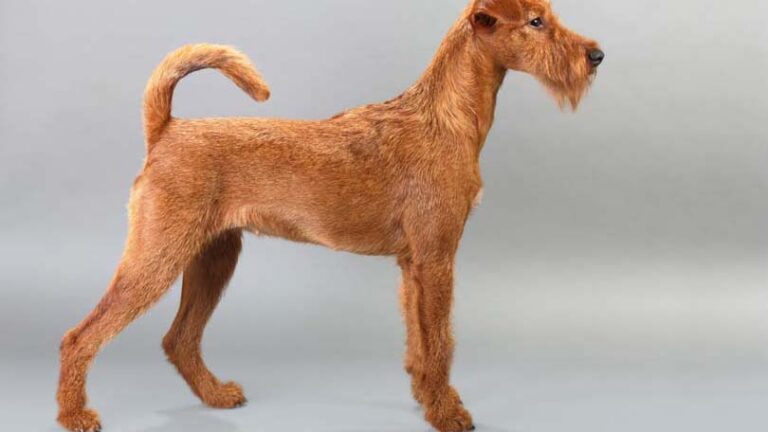Throwback Pomeranian – Bold, Cute, and Intelligent Purebred Pet
Perhaps you’ve heard the phrase “Throwback Pomeranian” and still feel unsure about what it refers to. Regardless of size, shape, or other physical characteristics, the majority of people think there is just one variety of Pomeranians. Although there is only one breed of Pomeranian and no recognized variations in size or any other physical characteristics, throwback Pomeranians do exist.
Let’s explain what a throwback Pomeranian is in detail and what criteria must be met for a Pomeranian to be considered a throwback.

What Is Throwback Pomeranian?
Throwback Pomeranian is a type of bigger Pom dog that is genetically closer to his progenitor Spitz-type sled dogs, both in size and behavior. Dogs typically acquire their characteristics from their parents, while some genes can be passed down for up to five generations.
Technically, there is no such thing as a Throwback Pomeranian or this type of dog. This word seems to have caught on among owners and non-preservation breeders to characterize their large Pomeranians.
What some people call Throwback Pomeranian is just a Pom that is bigger than the average size for the breed. Sometimes the dog’s natural body structure is up to four times larger than anticipated.
A large Pomeranian you own could be a Throwback Pomeranian. Any Pomeranian that meets the criteria for being considered a throwback must be an adult that is completely developed and is not overweight yet weighs more than 10 to 14 pounds.
The only distinction between a Giant Pomeranian or a throwback Pomeranian dog and a breed-standard Pomeranian is size. In reality, there is just one breed of Pomeranian.
A somewhat recent development, the phrase “throwback Pomeranian” aims to characterize canines that are comparable to Pom’s larger progenitors that once pulled sleds. Those dogs would be about 30 pounds and of the Spitz breed. Both the Siberian Husky and the American Eskimo dog breeds are linked to them.
Pomeranians are available in a wide range of shapes, hues, cuteness, personalities, and fashions. But not all poms are small canines or adorable balls of fur. Throwback Pomeranians are uncommon, but they occasionally appear in the litter, especially in colorful lineages.
History Of Throwback Pomeranian
Spitz dogs were medium-sized to large, powerful dogs employed in Iceland, Norway, and other Scandinavian nations for hunting, herding, and pulling sleds. In certain countries, they were also known as Zwergspitz. Spitz dogs gained notoriety for their powerful and muscular physique, high level of activity and endurance, and their double coat that kept them warm in the chilly Arctic area when the Kennel Club of England recognized them in 1870.
It is said that Pomerania, which is now a part of both Poland and Germany, is where the huge dog first began to be bred down to its present-day miniature size. Toy-sized lap dogs, on the other hand, were quite popular at the time among royals and society ladies, and Queen Victoria of Great Britain is credited with stimulating the breeding of them (however, some people believe that Mozart also owned toy Pomeranians). One of Victoria’s favored Poms took first place in a dog competition in 1891 thanks to her own Pom breeding program.
Physical Appearance of Throwback Pomeranian
Throwback Pomeranians and toy-size Poms have a striking similarity, but throwbacks frequently have bigger ears, noses, legs, and backs than the breed average for Poms and a coat that seems flat rather than fluffy. It does, however, shed all year like the coats of toy-sized poms.
It’s also likely that what owners mistakenly think are throwback Pomeranians are really hybrids of dogs that frequently appear on listings of mixed-breed Pomeranians. Pomeranian-Boston terriers, Pomeranian-Havanese, Pomeranian-Maltese, Pomeranian-Corgis, and dozens more are common Pom combinations. For example, the Pomeranian-Husky is called “Pomsky,” while the Pomeranian-Chihuahua is called “Pomchi.“
Puppies of Throwback Pomeranian
While the morphological variations between throwback Poms and normal Poms might not be immediately apparent in early puppies, they do become more noticeable as the puppies grow older. Although throwback Poms have longer legs, for instance, pups are so little that the longer legs may not be seen, especially since the majority of the puppies will be toy size and puppies are so active and always moving.
Pom pups of all sizes require the same care and, like other puppies, require a lot of time and attention. Due to their small bladders, puppies must go outdoors at least every two hours, so if you’re going to be gone, arrange for someone to take your puppy out several times a day.
Puppies should be socialized from an early age so they may learn how to behave around people and other canines. Take caution to avoid stepping on or injuring them because even throwback Pom babies are little.
How Much Do Throwback Pomeranian Cost
The weight is the main distinction between toys and real poms. Today’s Pomeranians are miniature, measuring between 3 and 7 pounds, with show dogs preferring between 4 and 6 pounds. Throwback Poms, in contrast, may reach adult weights of 18 to 20 pounds. It’s critical to confirm that a puppy that is bigger than the rest isn’t simply overweight.
All dogs are prone to gaining weight, and little dogs can do so easily if their owners give them too many goodies in exchange for all of the Pom’s adorable antics.
Throwback Pomeranian Care
Throwback Pomeranian maintenance is much the same as that for toy-size Pom maintenance. To avoid matting, brush their teeth once a day and their double coats once a week. Every day, get them moving by playing indoors or taking walks. The good news is that because Throwback Pomeranians are larger, they are less likely to suffer from small dog issues like luxating patellas or collapsed tracheas.
Alopecia X often called “black skin disease,” can cause coat loss in all poms. Regular vet visits are crucial because Poms can develop hypothyroidism as they age. Your Throwback Pomeranian can enhance your life for up to 16 years with regular maintenance and exercise.
Are Throwback Pomeranians Good Around Kids?
Throwback Pomeranians are lively, brave, and clever, and they behave similarly to their toy littermates in large part because they retained these characteristics while being bred down to toy size. Many owners describe their Pomeranians as small dogs with big dog personalities.
If you’re considering purchasing a typical Pomeranian for your kid, you’ll probably hear that families with small kids shouldn’t keep these dogs. Pomeranians must be handled gently because they often weigh no more than 7 pounds. Children, on the other hand, can unintentionally damage a little dog by dropping or stomping on it because they are frequently clumsy.
Consequently, don’t be shocked if some breeders decline to offer a Pomeranian puppy to a household with young children. Throwback Pomeranians are the best option if you adore the Pomeranian breed but live with a young child who is interested in everything.
Interesting Facts about Throwback Pomeranian
- Throwback Pomeranians are genetically related to their forebears, Spitz-type sled dogs, and are bigger than the breed’s average size.
- The term “throwback” is a contemporary creation, and there is no recognized breed of dog by that name.
- Throwback Pomeranians are more than twice the size of conventional Poms and often weigh between 18 and 20 pounds, yet they have comparable temperaments in terms of being independent but devoted friends.
- Due to their availability, Throwback Pomeranians are typically less costly than show-sized Pomeranian puppies.
- Backyard breeders are a common source for throwback Pomeranians and are less expensive than preservation breeders.
- Those dogs can be bred more easily than the smaller ones for competitions, and because of their larger size, they may be more suitable for families with young children.
- If given the right care, these dogs may live for 12 to 15 years on average.
- Throwbacks are unable to participate effectively in conformation exhibitions since they fall short on both size (4–6 pounds) and appearance when compared to others.
Throwback Pomeranians Are Less Prone To Injuries
You worry about your tiny dog, such as a Pomeranian, getting hurt because of its small stature. Sometimes all it takes to sprain or break a bone is a simple fall from a bed. Additionally, Pomeranians can get strained ligaments and broken joints from jumping on and off of furniture.
Throwback Pomeranians, however, are less prone to experience these issues. This is because their large bodies are less brittle than those of a 3- to a 7-pound dog. So you won’t have to worry about sprains or shattered bones if you play with a Throwback Pomeranian that can jump up and down. And the likelihood of accidentally stepping on them is far lower.
Additionally, there is no evidence that traditional Pomeranians have greater health problems than Throwback Pomeranians. In fact, given their large stature, some diseases, including a collapsed trachea, may be less likely to occur.
Bottom Line
Throwback Pomeranians can be quite the sight, and their large size and outlandish personalities frequently astound people. They give us a peek at what the earliest Pomeranians looked like and the reasons why people adored this breed so much.
Pomeranians, regardless of their size, shape, manner, or personality, have the extremely magical capacity to stare deeply into your soul and melt your heart to the point that you can’t fathom life going on without this dog joining your family.

Nato is a content writer and researcher with a background in psychology who’s eager to explore the wonders of nature. As a travel enthusiast and animal lover, she hopes to inspire others to discover and cherish the beauty and importance of the natural world.







